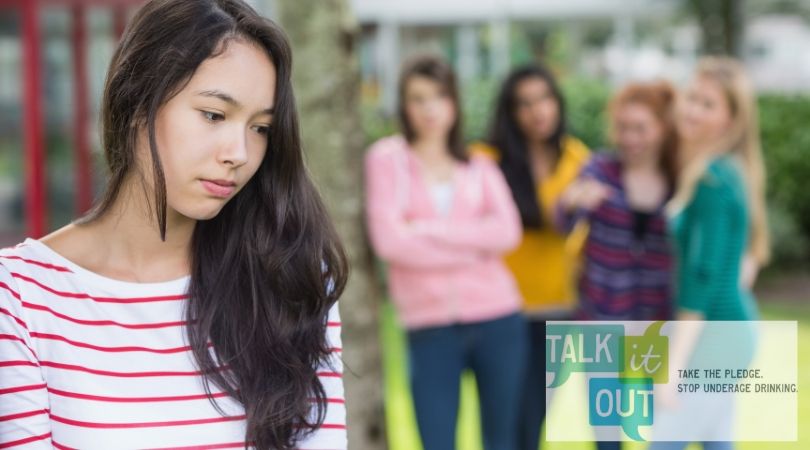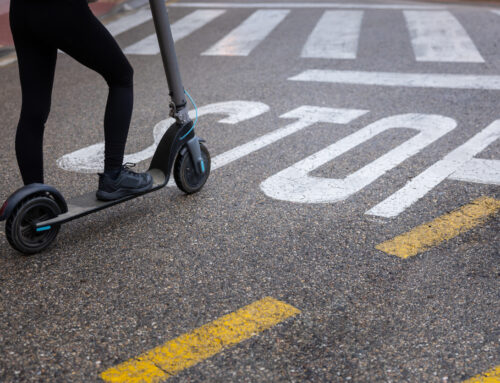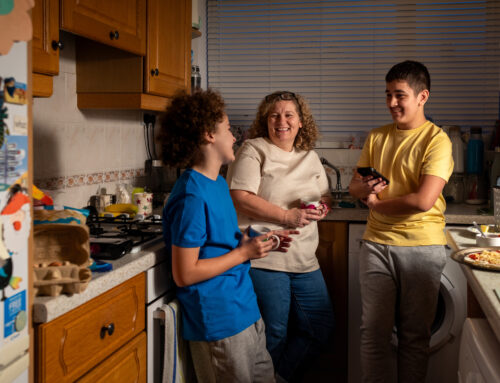How Do You Deal With Peer Pressure?


It’s a force of nature that can sneak up on a family like a thunderclap. Sometimes, it can cause stormy relationships between parents and their children. Peer pressure is one of the most powerful dynamics a child will face, during one of the most impressionable stages of life. It is pervasive and persuasive. When it leads to risky behaviors, it can wreak havoc on a young person’s life if they don’t have a strong bond with nurturing adults.
Peer pressure comes in many forms, both positive and negative. Researchers are now studying the nuances of influence, from suggestion to coercion, to see why some young people are more susceptible than others to pressure from their peers. The goal is to learn how and why children are influenced, and at what critical stages. Armed with that knowledge, parents and caring adults can develop methods to prevent dangerous behavior (like underage drinking) and intervene appropriately when there’s a problem.
Peer Pressure Tells Kids to “Just Do It”
Marc is a 16-year-old high school junior, and a star on his small-town high school basketball team. He has been offered alcohol in social situations with his peers. “Kids going to parties feel pressure from their friends, just to be like them,” he says. “Their friends are doing it, so they might want to do it, too”.
This is a common scenario. Many young people get their first opportunity to try alcohol at a party where no adults are present. That is the kind of peer dynamic Professor Brett Laursen, Ph.D., studies in the Department of Psychology at Florida Atlantic University. He and his team research how influence is transmitted in terms of friendships, romantic partners, and groups.
Recognizing Peer Pressure and Forces of Change
“When we talk about the mechanism of peer influence,” he explains, “we focus on how peers are forces of change. People who get you to do something you might not otherwise do were you left to your own devices.”
His research spotlights an interesting correlation between the number of friends a child has, and his or her vulnerability to influence, both positive and negative.
“When we look at things like who is the more influential partner within a friendship, there’s lots of obvious things that come out: the older one, the more attractive one, the one with better social skills,” he offers.
“A less obvious finding is that the partner who is better liked by other peers is the more influential friend. Partners with few friends have a tendency to conform for fear of losing friends.” In other words, if a child has many friend options, he or she is less likely to be swayed by the suggestions of others.
Understanding Peer Pressure Through the Curve of Influence
Dr. Laursen and his team recently published a study looking at how similar children are to their friends in terms of patterns of drinking to intoxication. The results form an inverted “U” shape, with the middle school years being the peak of the curve of influence.
“Starting in the early years of adolescence, ages 10, 11, 12…there is a modest amount of similarity between friends in terms of alcohol consumption and delinquency,” he reports. “But similarity increases at the start of the middle school years, when we become much more similar to our friends than we were previously. Then similarity between friends declines during the high school years. These trends confirmed our suspicions that there’s something special about the middle adolescent period.”
Brain research supports that idea on a biological level as well. The middle school years are a tricky mix of changing hormones, immature brain development, and lessening supervision by adults. The dramatic changes taking place during middle school mean that parents must be more vigilant than ever during this pivotal time in their children’s lives.
Children are trying to figure out who they want to be in the world, and they often make choices based on what will impress their friends instead of what will please their parents.
Power of Popularity and Pressure to Fit In
“Teens are biologically programmed to care about popularity in adolescence,” says Mitch Prinstein, Ph.D., Professor of Psychology and Neuroscience at UNC Chapel Hill. His research indicates teenagers focus on the behaviors of their popular peers because in most cases, it influences their own.
“Popular teens get their power from their ability to promote conformity in attitudes and some behaviors among those who look up to them,” said Prinstein.
Although Dr. Laursen at FAU doesn’t study the brain science behind influence, he is familiar with the research. “Scholars look at activation in different regions of the brain and it turns out that when peers are around, adolescents are more likely to behave in ways that activate the hot reward centers rather than the cold cognition centers.”
The Love Connection and Underage Drinking
“We look at drinking, for instance,” Laursen offers. “One finding I published with a former student (Dawn Delay of Arizona State) is that friends without romantic partners are similar to one another on drinking behavior, on drinking to intoxication. But when one or both of these friends acquires a romantic partner, friend similarity declines and those same individuals become more similar to their romantic partners. During the teen years as the importance of romantic relationships grows, influence appears to shift from friends to romantic partners.”
That can be a positive or negative influence, depending on whether the romantic partner is a big drinker, or a teetotaler. Dr. Laursen says that as teenagers get older, they want to become more like their romantic partners, to boost the chances that the relationship will succeed.
Ultimately, these budding relationships between teens, in addition to their existing relationships with their families, have a profound impact on behavior and habits. This is especially true in regard to underage drinking. By having a dialogue and starting a conversation, both parents and teens can prevent underage drinking together.
Basketball star Marc doesn’t have time for a girlfriend, since he stays busy with his homework, school team and travel basketball schedule. He wants to go to college and has developed strategies to avoid the pitfalls of peer pressure.
“You can just stop by not being around it, not putting yourself in that situation,” he says. “You can say things like, ‘Maybe next time,’ or ‘Not today’, any kind of excuse to get out of it.” Marc’s self-confidence stems from strong family support and a sense of purpose for his future.
Common Characteristics of Peer Pressure
Unfortunately, not all teens are that self-actualized. Dr. Prinstein says researchers are still learning why some teens are more susceptible than others to peer influence, but he says they’re finding some common characteristics:
• High concerns about their social standing
• Low self esteem
• More conflicted family relationships
• Low popularity
Other risk factors for susceptibility may include:
• Early maturation
• Overly-permissive or overly authoritarian parents
• Moving to a new environment
Help for Parents on How to Deal With Peer Pressure
What can parents do to help relieve some of the pressure? Dr. Laursen has some recommendations, based on his extensive research. He says parents should focus on their relationship with their teenager, and not particular friends or even specific behaviors. And Dr. Prinstein takes it a step further, saying parents should use every ounce of influence they have to guide their child in the right direction.
“Ask teens how they feel about risk behaviors, how their friends feel, and help them think through what the pros and cons are in a non-judgmental way,” he suggests. He adds, it’s important that “teens feel their decisions were made with respect and support, but not necessarily demands of their parents.”
For parents having trouble deciding how to talk to their teen and how to deal with peer pressure, Talk It Out NC encourages adults and their children to take the pledge to start the conversation to prevent underage drinking. Through support, patience, and understanding, parents can work with their teens to help them overcome peer pressure during what can be a tough time in their lives.



